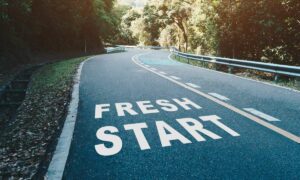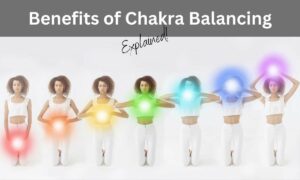Usui Reiki is a traditional form of Reiki that focuses on balancing energy through hand placements on or near the body to promote healing and relaxation. Karuna Reiki, on the other hand, is a newer form that incorporates chanting and visualization techniques, aiming to address deeper emotional and spiritual issues.
it was developed by a man named Mikao Usui. Usui was a spiritual teacher who sought to find a way to heal people in a more natural and holistic way.
Through his studies, he discovered ancient Sanskrit texts that described an energy system within the body known as chakras. Usui combined this knowledge with his own spiritual practices to create what is now known as Reiki.
Usui and Karuna Reiki: Two Main Branches
Over time, different forms of Reiki have emerged, but there are two main branches: Usui and Karuna. Usui Reiki is named after its founder and is considered the traditional form of Reiki. It focuses on balancing and healing through hands-on techniques that help channel universal life force energy throughout the body.
Karuna Reiki, on the other hand, was developed by William Lee Rand in 1995 as an extension of Usui Reiki. It incorporates additional symbols and techniques for deeper healing work and is often used for emotional or mental healing.
Both forms of Reiki are based on similar principles and practices, but they differ in their approach to healing. Usui Reiki emphasizes simplicity while Karuna tends to be more complex with added layers of symbolism.
Understanding the differences between these two main branches of Reiki can help practitioners choose which approach may be best suited for their needs or preferences. At its core, both forms seek to promote balance and harmony within individuals through accessing universal life force energy.

Usui Reiki
Origins of Usui Reiki
Usui Reiki originates from Japan and was developed in the early 1900s by Mikao Usui, a Buddhist monk. While on a meditation retreat, Usui experienced a spiritual awakening that led him to discover the principles and techniques of what is now known as Usui Reiki. The practice emphasizes the use of energy healing to promote physical, emotional, and spiritual well-being.
Principles and Techniques Used in Usui Reiki
The principles of Usui Reiki involve focusing on specific points on the body to unblock energy pathways and promote healing. Practitioners use their hands to transfer energy into the body while the recipient lies down or sits comfortably.
The technique involves gentle touch or hovering hands over specific areas of the body. The recipient may feel warmth, tingling sensations or relaxation during treatment.
Differences Between Traditional Usui Reiki and Western-Style Adaptations
Traditional Usui Reiki involves adherence to original teachings passed down from Mikao Usui in Japan. Some Western adaptations may incorporate additional techniques like visualization exercises or crystal therapy during treatments. Another significant difference is that traditional Japanese-style practitioners tend to place more emphasis on spiritual development than Western-style practitioners who focus more on physical healing.
Usui Reiki is an alternative healing modality that uses energy transfer through touch or hovering hands over certain parts of the body. Developed by Mikao Usui in Japan during early 1900s it promotes physical, emotional and spiritual well-being by unblocking energy pathways in your body leading to overall balance and well-being.. While there are some differences between traditional Japanese-style practices versus western adaptations which typically emphasizes more on physical healings than spiritual development but both forms seek overall balance through harmony with universal energies present around us.
The Birth and Growth of Karuna Reiki
Karuna Reiki was introduced in 1995 by William Lee Rand, founder and president of The International Center for Reiki Training (ICRT). It is an extension of Usui Reiki that is said to allow the practitioner to tap into a higher level of consciousness and healing energy. The word Karuna means “compassionate action” in Sanskrit, which reflects the practice’s focus on healing through compassion and empathy.
Rand was inspired to create Karuna Reiki after experiencing the benefits of Usui Reiki himself and feeling a desire to explore its deeper levels. He spent several years researching and refining the technique, drawing inspiration from various sources such as Tibetan Buddhism, Hinduism, and his own spiritual experiences.
Karuna Reiki has since gained popularity worldwide among practitioners looking to expand their skills beyond traditional Usui practice. It is now considered one of the most dynamic systems of energy healing available today.
Principles and Techniques Used in Karuna Reiki
Karuna Reiki builds upon traditional Usui practice by introducing new symbols and techniques that help address deeper emotional wounds. Practitioners are trained to use these symbols alongside the ones used in Usui practice for greater effectiveness.
One key aspect of Karuna practice is its emphasis on working with shadow self or parts of ourselves we may not want to acknowledge or confront. Practitioners learn techniques such as chanting sacred sounds or mantras, visualization exercises, journaling prompts, and more that help them work with their clients at this deeper level.
Another important aspect of Karuna is its focus on working with universal compassion – something that sets it apart from traditional forms like Usui where the energy comes from within oneself. Practitioners are taught how to channel universal love into themselves first so they can then share it with others.
Differences Between Karuna and Usui Reiki
While Karuna Reiki shares many similarities with traditional Usui practice, there are some key differences that set them apart. One of the biggest differences is the use of additional symbols in Karuna practice. These symbols help practitioners access a deeper level of healing energy, allowing them to address more complex emotional and spiritual issues.
Another difference is the focus on working with universal compassion in Karuna Reiki versus internal energy in traditional Usui practice. This can make it a better fit for individuals who are more spiritually inclined or who want to work with emotions at a deeper level.
Overall, both Usui and Karuna Reiki offer powerful ways to harness healing energy and promote wellness. However, it is important for practitioners and clients alike to understand the differences between these two practices so they can choose the one that best suits their needs.
Comparison between Usui and Karuna Reiki
Similarities between the two practices
Despite their differences, Usui and Karuna Reiki share some fundamental similarities. Both practices are focused on channeling healing energy from a higher source to promote physical, emotional, and spiritual well-being.
The core principles of Usui Reiki, including the importance of intention and self-care, are also present in the practice of Karuna Reiki. Another similarity is that both practices involve the use of symbols to focus energy during treatments.
These symbols serve as powerful tools for practitioners to connect with the universal life force energy and direct it towards healing. In both forms of Reiki, practitioners must undergo training in order to learn how to use these symbols effectively.
Key differences in philosophy, technique, and approach
The main difference between Usui and Karuna Reiki is their philosophy and approach to healing. While Usui Reiki is focused on promoting physical healing through relaxation and stress reduction, Karuna Reiki aims to address deep-seated emotional wounds leading to more profound spiritual growth. Technically, one notable difference is that Karuna involves more symbols than Usui – a total of 8 compared with 4 in traditional Usui.
Furthermore, while Usui focuses primarily on hands-on healing techniques (such as placing hands on or near a person’s body), Karuna emphasizes distance or remote healing methods. Perhaps most significantly though is the different ways that each treatment affects an individual: while a session with traditional Japanese-style Usui may result in an opening up of creative outlets or feelings of inspiration among recipients (something it shares with Western-style adaptations), those who receive a session from a trained practitioner using Karuna may experience profound shifts in consciousness or deep emotional releases.
Which practice may be better suited for certain individuals or situations
The choice between Usui and Karuna Reiki ultimately depends on an individual’s needs and preferences. Those seeking physical healing or relaxation may benefit more from traditional Usui Reiki, while those seeking emotional healing or deeper spiritual growth may find Karuna Reiki more effective. Practitioners can also choose to integrate both practices into their sessions, using the techniques that are appropriate for each client.
It should be noted that both forms of Reiki require extensive training and experience to be used effectively, so it is important to choose a qualified practitioner who has undergone proper certification in either practice. While there are some similarities between Usui and Karuna Reiki, their respective philosophies and approaches make them distinct practices.
Choosing which one is right for you will depend on your individual needs and goals for healing. Regardless of which practice you choose, the benefits of Reiki can be profound and life-changing when done correctly.
Conclusion
Summary of Key Points
Usui and Karuna Reiki are two forms of energy healing that share some similarities but also have distinct differences. Usui Reiki is the original form of Reiki, developed by Mikao Usui in Japan in the early 20th century. Its focus is on self-healing and achieving balance and harmony within the body.
Karuna Reiki is a more recent development that evolved from Usui Reiki, with an emphasis on compassion and healing past traumas. Both practices involve channeling universal life force energy to promote physical, emotional, and spiritual well-being.
They rely on different symbols, mantras, and techniques to achieve these goals. While traditional Usui Reiki tends to be more structured and formulaic, Karuna Reiki encourages a more intuitive approach.
Final Thoughts on the Importance of Understanding the Differences Between These Two Forms of Healing Energy
Understanding the differences between Usui and Karuna Reiki can help you choose which practice may be best suited for your needs or preferences. It can also deepen your appreciation for the richness and diversity of alternative healing modalities available.
Ultimately, whether you choose to practice Usui or Karuna Reiki (or both!) is a matter of personal preference. Both forms have been shown to provide powerful benefits for those who use them regularly – from reducing stress and anxiety to promoting faster healing after injuries or illnesses.
At their core, both practices are about restoring balance and promoting well-being in all aspects of our lives – physical, emotional, mental, and spiritual. By incorporating these principles into our daily lives through regular meditation, mindfulness practices or energy work sessions with trained practitioners – we can tap into our own innate ability to heal ourselves from within.



